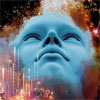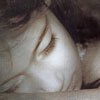Healing Dreams
 by Stanley Krippner
by Stanley Krippner
Diagnostic and healing dreams assumed great importance among ancient peoples. Many indigenous people believed that dreams represented a domain as important as the ordinary world and that what occurred in the dream world was as real as what happened in the waking world. Many tribes contended that the deities had “dreamed” the ordinary world into existence; in a similar fashion, a human being could “dream” an event into something substantive. Therefore, dreams of sickness and health were carefully scrutinized for their impact upon the well-being of the dreamer. The Ojibway Indians of the Lake Superior region in North America made “dream catcher” nets that hung over the beds of their children to catch unfavorable dreams; only favorable dreams would pass through, and it was assumed that they would facilitate the childrens’ health and well-being.
The Egyptian physician and architect Imhotep, who supposedly lived about 2900 B.C.E., became the patron of the ill. Individuals incubated their dreams at Serapeums or healing temples and reported their dreams to the katochoi, or dream scribe. If the katochoi did not deem the dream to be satisfactory, the patient remained in the sanctuary until an appropriate dream was reported. Patients often reported that Imhotep himself appeared with a diagnosis or a prescription. There is a historical link between the temples of Imhotep in Egypt and the healing temples of the Greek god Asclepius, which were especially popular in the fourth century B.C.E.. In the Greek temples, patients allegedly received diagnosis and treatment in their dreams during a visit from Asclepius or from one of his sacred animals.
Diagnostic dreams were studied by Hippocrates and later by Aristotle, both of whom explained dreams naturalistically rather than supernaturally. They were of the opinion that diagnostic dreams reflected bodily processes too subtle to be registered during wakefulness. Hippocrates saw dreams that reproduced recent experience without distortion as a mark of health. Hippocrates “was concerned with dreams in which the soul, awake while the body slept, indicated somatic changes and hence the proper prophylactic treatment. Prayer was particularly indicated in dreams that involved the heavenly bodies or the earth.” Especially bizarre dreams reflected some inner struggle in somatic functioning; disturbances in specific internal organs often were portrayed in the dream as streaming water, windstorms, or heat from the sun.
Aristotle observed, “It is evident that the beginning of disease and other bodily afflictions will be small, and these necessarily will show themselves more in dreams than in the waking state.” The concept that dreams could create as well as reflect waking life events was first articulated by Aristotle in an essay on prophetic dreams. He wrote, “The movements in sleep are often the starting points for the activities of the day, because the thought for the latter is already started on its way in our nocturnal fancies.” In the second century C.E., the Greek physician Galen stated that it was necessary to consider patients’ dreams to form an accurate diagnosis and prognosis of their ailments.
Native American shamans made considerable use of dreams in their work. A contemporary shaman, Leslie Gray, has described her experiences with a healer from the Pomo Indian tribe. This healer told Gray that all of his healing ability and knowledge emanated from his dreams. For example, in his dreams he was instructed to move his hands in a vibrating manner to transfer the “healing energy” that is transmitted through him to his clients. Gray worked with the Pomo healer as well as with a Cherokee shaman when a severe neck injury did not respond to conventional medical treatment. Her work with the two Native American practitioners was successful and eventually led her to go beyond her university training in clinical psychology to obtain additional instruction from North American Indian shamans.
Throughout the Middle Ages, the primary concern of European theologians was whether a dream was divinely inspired, or whether it was sent by demons. However, in the thirteenth century, a number of individuals speculated about dreams and illness. Michael Scot, an astrologer in the court of Frederick II, believed that dreams could be used to diagnose imbalances of blood, cholera, “melancholy” conditions, and unusual dryness, coldness, or heat in the body. Brother Bartholomew of England, a Franciscan monk, believed that natural bodily conditions were among the causes of dreams. Saint Thomas Aquinas wrote that dreams were the result of natural causes, among them bodily conditions. Albertus Magnus, a teacher of Saint Thomas, used dreams in his medical diagnosis.
From the Renaissance to the eighteenth century, there was little interest in dreams on the part of most Western philosophers. The major exception was Thomas Hobbes who speculated on the organic causes of dreams. Hobbes suggested that the erratic behavior of the body’s internal organs during sleep contributed to the disordered sequences of thoughts in dreams.
Health Diagnosis in Dreams
In 1967, the Russian psychiatrist Vasily Kasatkin reported on a twenty-eight year study of over eight thousand dreams, concluding that dreams could warn of the onset of a serious illness several months in advance. Kasatkin often observed changes in dream content shortly before an illness appeared; sometimes he was able to save a patient’s life through early diagnosis and treatment.
In general, dreams announcing the onset of a disease were often found to contain frightening images, including scenes of war, fire, battles, and damage to the body. Unpleasant thoughts and feelings were also more often present, as were such emotions as terror, loneliness, and panic. Physical pain was not characteristic of many of these dreams, probably because the brain stores pain memories in an area far removed from the visual-motor cortex, the main area activated during REM sleep.
As the symptoms of the indisposition worsened, so did the dream content. But as the illness ran its course, the dream images reflected the recovery. Kasatkin reported that recurrent dreams of bodily wounds revealed the most serious conditions. For example, patients with repeated dreams of chest wounds often suffered serious heart attacks. Patients reported other dream images that proved to be symbolic of their ailments as well. One of Kasatkin’s patients, for instance, had recurring dreams about a blocked chimney just before being diagnosed as having respiratory problems. Kasatkin’s work with dream symbols and health has brought humankind full circle. Just as many native people believed that dream images could impact ordinary reality, many physicians and psychotherapists now believe that dream images can assist not only in identifying health problems but also in restoring one’s health and well being.
Carl Jung once accurately diagnosed a cerebrospinal condition in a man he had never met, solely on a description of one of the man’s dreams. The neurologist Oliver Sacks tells of a woman who had a series of disturbing dreams. In one of them, she was imprisoned in an inaccessible castle that had the shape of her own body; in another she had become a living statue made of stone; and in another she had fallen into a sleep so deep that no one could awaken her. In this case, the dreams were ignored. One morning the woman’s family had difficulty waking her; she had become catatonic and had succumbed to Parkinson’s disease.
In Krippner’s cross-cultural collection of dream reports, there were three dreams in which information in the dream had practical health consequences. A Russian woman reported this dream:
Suddenly, a small black snake appears and bites me in the right side of my neck. I squeeze it with three fingers and it opens its mouth. I squeeze the poison out of it, and try to find a place to put the snake. I find a glass box and open it with great difficulty. I put the snake in. When I wake up, I am still squeezing my hands. But that action decreases my recurring headaches. I still use that squeeze when I have headaches, but they have almost disappeared.
Another dramatic example was provided by William Dement, a pioneer investigator of REM sleep. He recalled the following dream:
Some years ago I was a heavy cigarette smoker—up to two packs a day. Then one night, I had an exceptionally vivid and realistic dream in which I had an inoperable cancer of the lung. I remember as though it were yesterday looking at the ominous shadow in my chest X-ray and realizing that the entire right lung was infiltrated. The subsequent examination in which my colleague detected widespread metastases in my . . . lymph nodes was equally vivid. Finally, I experienced the incredible anguish of knowing my life was at an end, that I would never see my children grow up, and that none of this would have happened if I had quit cigarettes when first I learned of their carcinogenic potential. I will never forget the surprise, joy, and exquisite relief of waking up. I felt I was reborn. Needless to say, the experience was sufficient to induce an immediate cessation of my cigarette habit. The dream had anticipated the problem, and solved it in a way that may be a dream’s unique privilege.
As Dement experienced, healing dreams become crucially important when one discovers a correspondence between dream life and waking life. Rosalind Cartwright, a psychologist, selected a number of psychotherapy clients who seemed as if they might end their therapy before significant progress had been made. The clients were asked if they would like to enroll in a two-week sleep and dream program. Forty-eight accepted her invitation. Of this group, sixteen were regularly awakened during REM sleep, sixteen during non-REM sleep, and sixteen went directly into psychotherapy. Each morning, the sleep laboratory subjects were asked to recall and talk about the dream reports they had made to the experimenter during the night. Compared with the subjects who went directly into psychotherapy and those awakened during non-REM sleep, the subjects awakened during REM sleep were more likely to remain in psychotherapy for at least ten weeks. Furthermore, of the participants in the three groups, those subjects made the most changes in their lives.
Award-winning author Marc Ian Barasch was able to detect his thyroid cancer through a series of nightmares that pointed literally and metaphorically to a problem in his neck. He writes: “after one terrifying dream—torturers had hung an iron pot filled with red-hot coals beneath my chin, and I woke up screaming, the odor of searing flesh in my nostrils—I couldn’t ignore them any longer.”
Barasch sought the advice of physicians and the only symptoms he had were his nightmares! With the initial tests, doctors were unable to detect any problems but his dreams continued warning him. Barasch insisted on being thoroughly examined. Finally the doctors were able to detect a hard lump—a thyroid nodule. The lump turned out to be cancerous. Were it not for his haunting dreams, his cancer would not have been detected early. It is possible that his nightmares saved his life.
Carl Simonton and his associates worked with a young male patient who reported a dream of an “unorthodox doctor” who told him that he had come to help him. This dream doctor told the patient how to remedy his weight loss, improve his muscle tone, overcome his fear of women, and express his sexuality more fully. The patient began to gain weight, developed an exercise program, and improved his social relationships. Simonton and his colleagues suggested that the dream doctor symbolized their patient’s “inner healer,” and that his advice was closely attuned to what the young man needed for his development.
Research with Healing Dreams
Robert C. Smith has conducted a number of studies on the “early warning” properties of dreams. In one study, he collected recent dreams from a group of individuals hospitalized for various medical problems. In follow-up visits, he discovered that men in the study who had dreams about death had a worse prognosis than men who did not have these dreams. Women who had dreams about separation had a worse prognosis than women who did not have this type of dream. The men and women who had the negative dreams were more likely to die, or to experience complications of their illness or re-hospitalizations than the other subjects studied, although all groups had been in equally serious condition during their original stay in the hospital.
One terminally ill man in the study had the following dream about death one week before his first admission to the hospital:
My brother and I visited our old house . . . and mother was there in her casket. It was all black except for a weird glowing red stripe. . . . She tried to get out, but then fell back and seemed to disappear; she was a goner for sure now. We took her to the cemetery and almost got killed ourselves in a flood on the way. There weren’t many people there. Dad was dead for years.
A woman who was admitted to the hospital because of breast cancer had the following dream about separation. She died six months later, after several re-admissions:
I can’t find my husband. He’s never gone this long. I keep searching. I miss him. Then a strange dog comes in. I worry about Betsy, our cat, but can’t find her. I’m more lonely and call my daughter, but she’s not there.
This study provided some of the first evidence that traumatic dreams might be warnings of underlying medical problems. However, Smith’s method was retrospective; he began with the prognosis and then looked backward in time to see what the patients’ early dream content had been. In a later, more rigorous study, Smith started with the death and separation dreams, made a prediction about the outcome, and then determined whether the prediction was correct. Using a group of patients being examined for possible heart disease, he predicted that the more traumatic the patients’ dreams, the more serious their diagnosis would be. His prediction was confirmed; the greater the number of death dreams (i.e., for men) or separation dreams (i.e., for women), the more severe the heart disease was found to be.
Frederic J. Boersma conducted an intensive investigation of the dreams of a woman diagnosed with ovarian cancer. Boersma worked with the woman’s dreams in psychotherapy, as well as hypnosis, active imagination, and poetry. Her recovery was remarkable and was mirrored in her dream content. Boersma identified six themes in her dreams: unfinished business, conflict, blockage, psychological defenses, death, and spiritual healing. He based his psychotherapeutic intervention on these themes, assisting the woman to release past heartache and resentment, deal with psychological and physical pain, and express her deep feelings honestly and directly. The woman’s dreams included many images of body armor and shielding. Boersma saw these as symbols of her psychological defenses against acknowledging her feelings. In active imagination exercises, he invited her to let down these defenses and use the newly acquired energy for healing purposes.
Harry A. Wilmer studied the dreams of 103 Vietnam War veterans receiving Jungian-oriented psychotherapy for post-traumatic stress disorder. Although they had been back in the United States for at least seven years, 53 percent of their 359 reported dreams depicted actual combat events. A second cluster of dreams depicted combat events in metaphorical form. A third group of dreams portrayed fantastic events that appeared to be metaphors for healing and recovery. Wilmer observed that the veterans who recovered from the post-traumatic stress gradually moved through the three types of dreams.
Originally, they would dream about being under attack, or about killing enemy soldiers. As their therapy progressed, the dreams would become metaphors for the battles and for associated life issues. Finally, the dreams would reflect resolutions of the issues raised and a coming to terms with the war events.
Psychologist E. W. Kellogg has reported a number of case studies in which he used lucid dreaming to heal an injury. In one case, Kellogg himself reported that he had punctured his tonsil with a wooden skewer while he was eating Japanese food. His tonsil became swollen and infected. He attempted an out-of-body experience to heal his tonsil, but instead had the following lucid dream:
I became lucid and tried to heal my throat. I looked in a mirror and my throat looked healthy, but the tonsils looked more like the middle section [i.e., uvula] than like tonsils. So, in my dream body my throat looks healthy, but different. I use affirmation for healing to occur and my throat does feel much better.
Upon waking from this dream, Kellogg did not feel any pain and the next day the right tonsil looked almost normal. He reported that 95 percent of his infection disappeared within twelve hours of his lucid dream.
Citing many case examples, Robert Moss shows how dreams can facilitate healing from a shamanic perspective. His case studies demonstrate that shamanic traditions retain powerful techniques that can assist contemporary dream practitioners. For example, he took one man with cancer on a guided imagery journey in which he encountered a figure covered with blue tattoos. This strange figure seemed to emanate energy that was directed to the cancer cells. Moss’ client felt the tattoos represented a new “blueprint” for his life and began work with the images that the strange figure had pointed out to him; soon, his cancer was in remission.
Bogzaran has been using dreams as a diagnostic tool and working with dreams for healing. The following is her personal account of a dream related to illness, and how she took charge as the dreamer and worked with the dream.
In the turning of the season, when many people suffer from the flu, Bogzaran felt herself on the verge of an illness. She took a nap and had the following dream:
I am walking in a street and suddenly I am attacked by a ferocious group of bugs. I am trying to defend myself but they are too aggressive. I become more and more anxious.
Bogzaran woke up with a headache and a sore throat. Reflecting on the dream, she saw the attack of the “bugs” as a possible attack of the flu virus. The “bugs” were weakening her immune system and the sore throat was her body’s defense against the virus. Using a dream re-entry technique, she visualized herself once again walking in the street. As the bugs came towards her she put out her hands, imagining a liquid stream coming out of her fingers to repel the bugs. As the imaginary liquid jet came out of her fingers, her body began to feel lighter. She managed to repel most of the insects. Instead of being the passive victim, she took an active role to defend her body. When she ended the dream re-entry experience, Bogzaran felt much better. Her headache was completely gone and her sore throat slowly disappeared within couple of hours. She did not catch the flu.
Excerpt from Extraordinary Dreams
Posted in Health, Other Topics, Spiritualitywith comments disabled.





